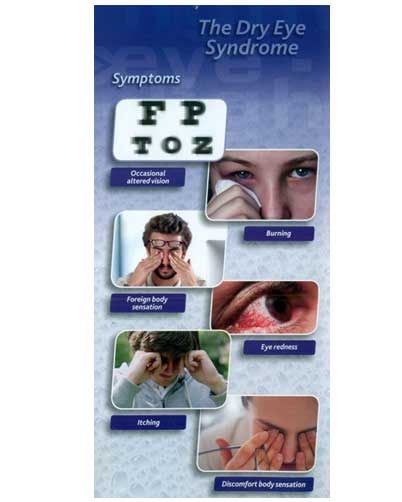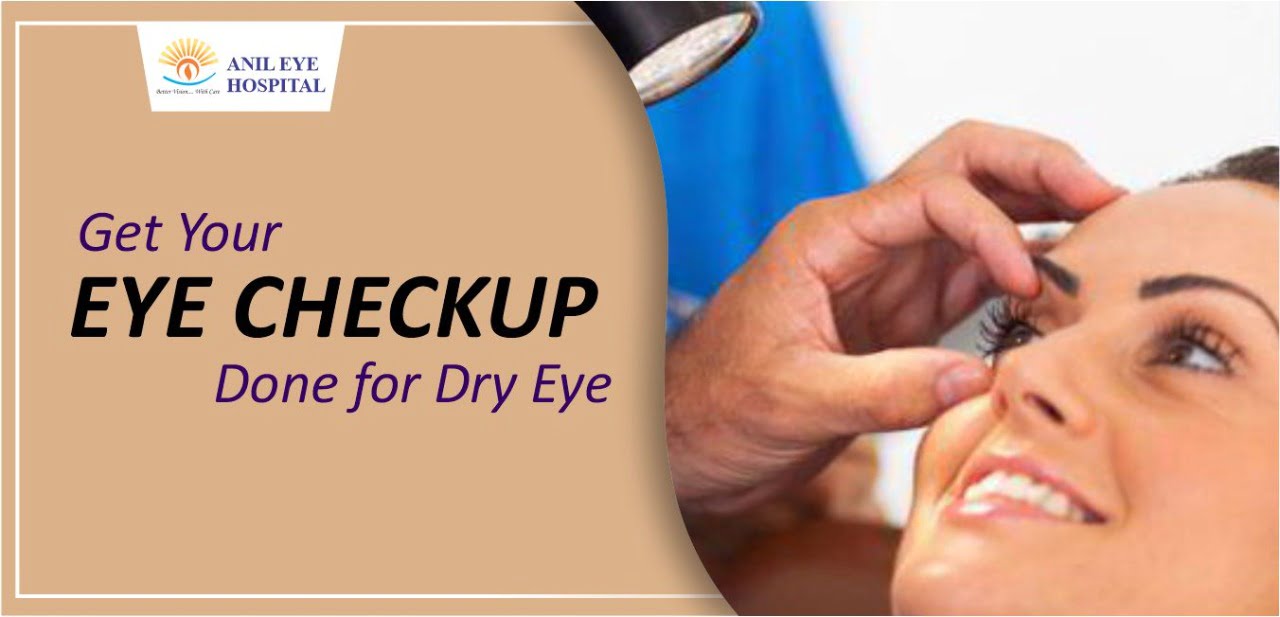Dry Eyes Syndrome
Over 300 million people worldwide suffer for Dry Eye Syndrome.
In Italy it involves 26% of adult population, but this syndrome mainly affects women over 40 years old (50%) and those in menopause (90%).

Tear Film :
Tear Film, necessary to the functioning of the eye, is formed by three layers :
A mucous layer in contact with the eye globe, secreted by the conjunctival mucus cells.
An aqueous layer secreted by the lacrimal glands.
A lipid layer secreted by the Meibomian glands.
What is Dry Eyes?
Dry Eye is a disorder of the tear film due to a reduced production or excessive evaporation of tears, which causes damage to the exposed ocular surface, and is associated with a feeling of eye discomfort. Excessive evaporation of tears (cause of 86% of dry eyes cases) is caused by the obstruction or malfunction of the Meibomian glands that are located in the eyelids and are responsible for producing the lipid layer of the tears. When not working properly, they do not produce enough oil component in the tear film, so tears evaporate more rapidly. Insufficient or absent lipid layer can cause evaporation of the tear up to 16 times faster.
Risk Factors of Dry Eyes:
Symptoms of Dry Eyse:
Allergic conjunctivitis
Hormonal imbalance – Menopause
Use and abuse of eye cosmetics
Use of contact lenses
Chronic blepharitis
Age (especially after age 50)
Prolonged use of video terminals
Prolonged use of systemic drugs (i.e.: antihistamines, etc.)
Air pollution

Diagnosis of Dry Eyes:
Dry eye diagnosis should always be made by the Ophthalmologist with reliable tests, thus avoiding self-diagnosis and treatment “over the counter”.
The Ophthalmologist will consider a number of parameters and the correct therapy for each specific case.
Dry Eyes Treatment:
There are several solutions for the dry eye problem, going from artificial tears (eyedrops) to a new generation of therapeutic treatments.

This equipment uses two medical technologies in synergy with each other to optimize the result.
OPE® (IPL) is a polychromatic light that thanks to thermal pluses stimulates the Meibomian glands to resume normal activities. Applied to the periorbital areas and cheekbone, it stimulates contraction of the glands, increasing the lipid stream and reducing the evaporation of tears.
Light Modulation® (LLLT) is a unique technology of photo biomodulation used for many years in various fields of medicine (dermatology, dentistry, etc.).
The emission of a particular light – to a certain wavelength – triggers an endogenous heating of the eyelids. This treatment eases the spill – from the Meibomian glands – of the tear film’s oily component, stabilizing the lipid layer of the tear.
Dry Eyes Treatment
The Protocol :
The treatment improves symptoms of the disease after a few hours. Thanks to the synergy of the two technologies, the Meibomian glands resume the production of lipid necessary to the eye’s functionality. It is not painful; it lasts a few minutes and allows an immediate return to normal activities. A few hours after the treatment you can appreciate an improvement of the Meibomian gland functionality.
Few sessions (2 to 4) at different intervals (15/20 days) are necessary to achieve an optimal result.
Meibomian gland dysfunction (MGD) :
Meibomian gland dysfunction (MGD) is one of the most common causes of an abnormality of the tear film lipid layer and evaporative dry eye. Numerous risk factors of MGD are reported. Its prevalence varies between countries from 20% to 60%, with the highest rate in Japan. MGD is a chronic, diffuse abnormality of the meibomian glands, commonly characterized by terminal duct obstruction and/or qualitative/ quantitative changes in the glandular secretion. This may result in alteration of the tear film, symptoms of eye irritation, clinically apparent inflammation and ocular surface disease.
Dry Eyes Treatment


